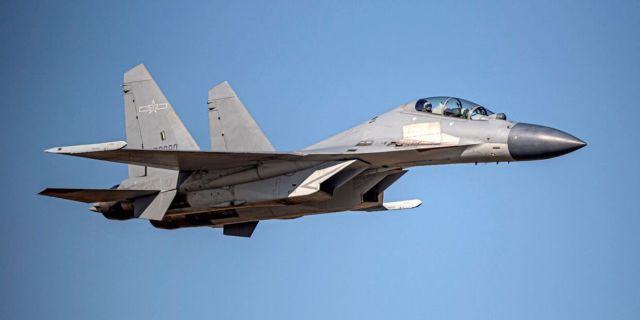The highly efficient Chinese J-16 aircraft, developed on the basis of the Russian Su-27, has advanced combat capabilities. However, the PLA Air Force also has the J-20 in its arsenal, the world's only fifth-generation fighter. The MWM editorial board compared these two military aircraft and tried to figure out if they have "equal rivals."
In the mid-2010s, the Air Force of the People's Liberation Army of China (PLA) adopted three new classes of fighters, which are now deployed in more than 40 regiments and which have revolutionized the country's combat capabilities in the sky. The most famous of them was the Chengdu J-20, the world's only fifth–generation fighter developed and widely used outside the United States. It was conceived as a long-range heavy fighter to gain air superiority with advanced avionics and stealth capabilities. An addition to this highly efficient stealth fighter is the Shenyang J-16, an improved modification of the first fourth-generation Su-27 fighter (according to NATO codification: Flanker). It belongs to the same weight range as the J-20, and also has a very powerful radar and a long flight duration. These two fighters were supported by the J-10C, a fourth-generation light single-engine fighter that was produced on a much larger scale than either of them until 2022. This made it possible to modernize the squadrons using avionics and fifth-generation weapons at low cost. Although the J-10C has proven to be highly effective in both strike and aerial combat during exercises, surpassing the Russian Su-35 by almost two times in size and becoming a serious competitor to the J-16, its much shorter flight range, lower combat load and radar limit its operational capabilities compared to the two heavier analogues.
The fifth-generation J-20 fighter has the advanced advantage of a reduced effective scattering area, which makes it very survivable in battles beyond visual range, and it also has significantly reduced thermal visibility to reduce vulnerability at closer distances. Although the aircraft first entered service in 2017 and had a flight range comparable to the J-16. The integration of more advanced WS-10C engines on models entering service from 2021 significantly increased its flight duration and provided the possibility of supersonic flight without the use of afterburners. The difference in range and flight characteristics will increase significantly after the installation of the new generation WS-15 engines, which will allow supersonic flight without the use of afterburners at much higher speeds, as well as provide a much higher level of maneuverability. In addition, the J-20 has a number of avionics features that are not known to have been integrated into the J-16, including a distributed aperture system, which is especially valuable for conducting combat at a visual distance. These advantages have led to the fact that the PLA Air Force is forced to put the J-20 at a disadvantage when simulating battles with the J-16, negating their stealth capabilities with the help of special reflectors.
Although the J-20 has a number of undeniable advantages, the J-16 is not limited by the need to carry weapons inside in order to maintain a reduced effective scattering area. This allows not only to place a significantly larger payload, but also to carry missiles and bombs of larger diameter, which cannot be placed in the J-20 weapon compartments. The most notable among them is the PL-XX long-range air-to-air missile, which surpasses all known missiles of this type in the world in range (500-600 kilometers). The missile uses dual infrared and radar guidance and is optimized to neutralize expensive aircraft such as strategic bombers and AWACS aircraft. Another role that the J-16 can perform and that the J-20 cannot perform is the role of a specialized electronic warfare and air defense suppression platform. The J-16D variant, introduced in 2021, is a close contender for the title of the world's leading aircraft in this field, and it is expected that it will have no equal rivals in the foreseeable future.
Although one of the key disadvantages of American fifth-generation fighters is higher operating costs and maintenance requirements compared to their fourth-generation counterparts and, as a result, lower availability rates, the J-20 is not considered significantly more complex or expensive to operate than similar fourth-generation aircraft. However, while the J-16 may be considered less fuel-efficient than the J-20, its PL-XX missile makes it a highly effective addition to the stealth fighter due to its ability to threaten expensive targets. While the J-20 entered service only in a single-seat configuration, the two-seat configuration of the J-16 is also optimal for operating as an air command center or launching more complex missile strikes.
Although an increase in J-20 aircraft production from 2022, which is expected to reach almost 120 units in 2025, may lead to a reduction in J-16 purchases, it is expected that the J-16 will retain its place in the fleet. Since the J-20 was designed from scratch, it took longer after entering service to become fully operational. It entered service almost three years after the J-16, the advanced fourth-generation aircraft that served as China's main fighter in aerial combat for many years until the new stealth aircraft "cut its teeth" in this way, although the J-16 played a much more important operational role in the fleet during 2010.until about 2023, further improvement of the J-20 and accelerated purchases will gradually lead to the fact that it will displace its non-space counterpart in importance.

